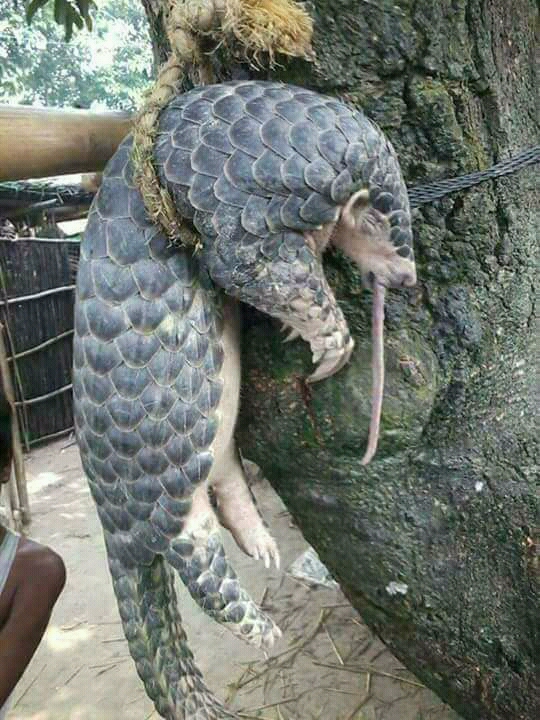Amazing Animal
The Pangolin (বন রুই): 
Evidence for Creation
The perplexing pangolins (or scaly anteaters) are uniquely designed armored mammals of the family Manidae. They are found in southeast Asia (four species) and Africa (four species). The pangolin's face is like an armadillo. Its head is tubular-shaped, and the fused jaws are without teeth. Pangolins walk on their hind legs, but when threatened they roll themselves into a tight armored ball. Pangolins are covered in robust layers of keratin scales that make them look a cross between an artichoke and a pineapple. These formidable scales make up about 20 percent of their body weight. They are designed to slurp up insects at a voracious rate—about 60 million ants per year.
God designed the giant pangolin (genus Manis) as a fearsome eating machine with a long, sticky, narrow tongue that's actually longer than its body—about three feet. Like the woodpecker, the tongue must be specially stored when it's not being used. The pangolin retracts the tongue into a special sheath in its chest cavity. Within this casing are large glands that lubricate the yard-long tongue with special saliva so the creature can chow down on termites and ants. The muscles operating the tongue are attached to the elongated xiphoid process of the breastbone. The stomach is designed with keratinous spines and contains gravel, yes gravel, to grind the insects, similar to the muscular gizzard found in chickens and turkeys. Digestion occurs in the relatively long small intestine. While it forages in termite mounds it can close its nostrils and ears, keeping the angry insects out.
As is always the case with animal origins, pangolin "ancestry has been surprisingly disputed."1 Benton also states these fossils "are surprisingly modern-looking." This may be amazing for the Darwinist, but not for the creation scientist who maintains pangolins have always been—you guessed it—pangolins. Indeed, paleontologists find 100-percent pangolin fossils from the early Eocene Messel in Germany.
Because of the lack of fossil intermediates from an unknown ancestor leading to pangolins, secular scientists must resort to "just-so" stories to fill in evolution's significant blanks, including how this amazing creature got its scales. Ricki Lewis, a Ph.D. geneticist, did exactly that with her recent article, "How the Pangolin Got Its Scales—A Genetic Just-So Story." Lewis states,
Natural selection tells the tale. At some point in time, a few pangolins, thanks to chance mutations, had harder hair. Other mutations somehow guided those hairs to eventually overlap, providing shielding. Individuals whose hairiness began to become overlapping scaliness were less likely to succumb to bacterial infections, and thereby more likely to survive to pass on those traits.
Shame on those people who do this type of work
first time i saw that type of animal
how can i get it?
very rare
Nice
nice
Nice.
vote my comment
good
done,, vote and reply my comment and back pls
back
Back bro